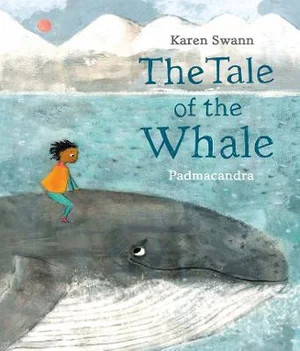The tale of the whale by Karen Swan and Padmacandra

A young lad is taken by a whale into the depths of the ocean, initially to enjoy the forests on the ocean floor, a shipwreck, the other sea creatures. Each four line verse ends with two lines such as :
I smiled at the whale
and the whale smiled at me.
Kids will love predicting these last two lines and repeating them with the reader as they tell the story. The wonderful illustrations reveal a beautiful ocean: full of wonder and awe, colour and interest. After frolicking on the ocean waves beneath the warm rays of the sun, they dive deep onto a shipwreck, full of mystery and magic, then swim through mountains and valleys of sand, the colours of the ocean astounding the boy. All seems quite benign until the whale opens its gigantic mouth to take in a sea of water and food. With dismay the boy and the reader note that this mouthful is full of junk - junk left by us. Readers will spot ring pulls and plastic bags, plastic bottles and plastic netting, all wrapped around the creatures in the ocean. The tone of the story changes
I cried with the whale
And the whale cried with me
as the tale of the whale becomes a plea for his environment, one now so polluted and begging to be reinstated to what it once was. The plastic soup sea is there for all of us to help clean up.
This is a determined look at the ocean and what we have done to it, imploring readers to take action. The verses are easily learnt and repeated and the last few lines should be emblazoned in every classroom as the imperative for change is spoken.
Along with beautiful dreamy blue watery illustrations, the story cannot help but be read and read again in lots of classrooms, enlisting the enthusiasm of the young to better use their environment and repair the damage that has been done. Teacher's notes are available.
Themes: Whales, Pollution, Plastic, Waste, Responsibility.
Fran Knight